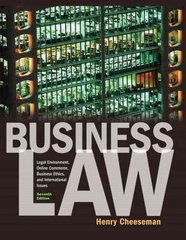Question
Task A Answer TWO of the three questions and fewer using diagrams to illustrate your answers. Each question answered is worth 10% of your overall
Task A
Answer TWO of the three questions and fewer using diagrams to illustrate your answers. Each question answered is worth 10% of your overall mark for the module.
- A consumer splits their income equally between two goods. If the price of one good increases by 10% and their income increases by 5%, show that the consumer's optimal consumption bundle will change despite them being able to afford their original bundle.
- When estimating a demand function, explain why fitting a line of best fit through observed price and quantity combinations over time is not likely to yield good estimates.
- If a firm uses only capital and labour, show why the cost minimising combination of inputs sets:MPKMPL=PKPL
Task A guidance:
This task is intended to assess your knowledge of conventional microeconomic principles (part of LO1). The word count is deliberately tight in order to force you to prioritise the most important arguments/explanations in your answers. Providing clear and concise explanations of the most important aspects will lead to good marks. Your answers should be written in an academic style.
Diagrams are essential. It is impossible to produce a good answer to these questions without using a well-chosen, and well-drawn, diagram. Do not simply present a diagram without carefully explaining it in the text. Use diagrams to save words and explain them to illustrate your answer.
Task A marking criteria:
A1 -How well is question addressed? (40% of marks)
Are all parts of the question answered? Is the answer precise? Are the key concepts explained? Are the most important arguments emphasised or is the focus on minor aspects of the topic?
A2 -Use of diagrams(40% of marks)
Are diagrams used? Are they well explained in the text? Is the reader talked through them? Are they clearly drawn? Are the diagrams used appropriate?
A3 -Clarity and referencing(20% of marks)
Clarity of explanation, language, structure, use of academic style, referencing (Harvard style? Correctly applied? Uses a range of academic sources?), well presented?
NB This mark scheme is indicative rather than definitive; it allows flexibility, especially in the allocation of marks between criteria. If required, criteria other than those listed may be used.
Task B - 80% of your final mark (LO1, LO2 & LO3):
Select a (domestic)[1]public limited company of your choice which has some degree of market power. In an essay , evaluate the pricing strategies it employs for its core product/business in order to increase its market share and profitability within its industry (at the national level).
[1]Select a domestic company for the country you study in, unless instructed otherwise. For example, if you are a student in the UK, you must select a UK company and analyse its UK industry. If you study in another country, select a company equivalent to public limited company in this country (e.g., SA in France, Spain, SPA in Italy etc.).
Task B guidance:
Task B must be written as an essay. You will need to build up a case study based on a company of your choice. You must first demonstrate that the company has some power to set its own price (that is, it has some degree of market power) - e.g. what is the structure of the industry it operates in? What is its market share for the product? How concentrated is the industry?
You must then use economic analysis to evaluate the pricing strategies your firm has adopted for its main product(s). Make clear comparisons between the predictions of the economic theories covered in the module and the empirical evidence for your firm. Are the strategies adopted by the firm optimal? If so, why? If not, why not? How might they be improved?
Task B marking criteria:
B1 - Knowledge & Understanding (30% of mark)
Should demonstrate knowledge and understanding of economic theories. The economic concepts under consideration should be clearly defined. It should contain appropriate and insightful connections between economic theories and the real-life business issues of the company.
B2 - Analysis (35% of mark)
The choice of company must be well justified and the essay should contain comprehensive analysis of the pricing strategies pursued. It should demonstrate insightful and independent thinking.The economic analysis should explain and critically evaluate the company's pricing strategies. It should include empirical evidence to support arguments.
B3 - Figures, Tables & Data (20% of mark)
Should demonstrate an excellent use of supporting evidence (figures, tables, and data); figures and tables should be referred to, presented well and sufficiently described in the text.
B4 -Structure and referencing (15% of mark)
Should contain an introduction, a main body and a conclusion. Sections, subsections and paragraphs should be well-transitioned and follow in a logical order.Sources should be properly cited and listed in a reference list in a correct Harvard System of Referencing convention at the end of the essay.
NB This mark scheme is indicative rather than definitive; it allows flexibility, especially in the allocation of marks between criteria. If required, criteria other than those listed may be used.
*note*
Choosen company is Air Asia Sdn Bhd
Step by Step Solution
There are 3 Steps involved in it
Step: 1

Get Instant Access to Expert-Tailored Solutions
See step-by-step solutions with expert insights and AI powered tools for academic success
Step: 2

Step: 3

Ace Your Homework with AI
Get the answers you need in no time with our AI-driven, step-by-step assistance
Get Started


